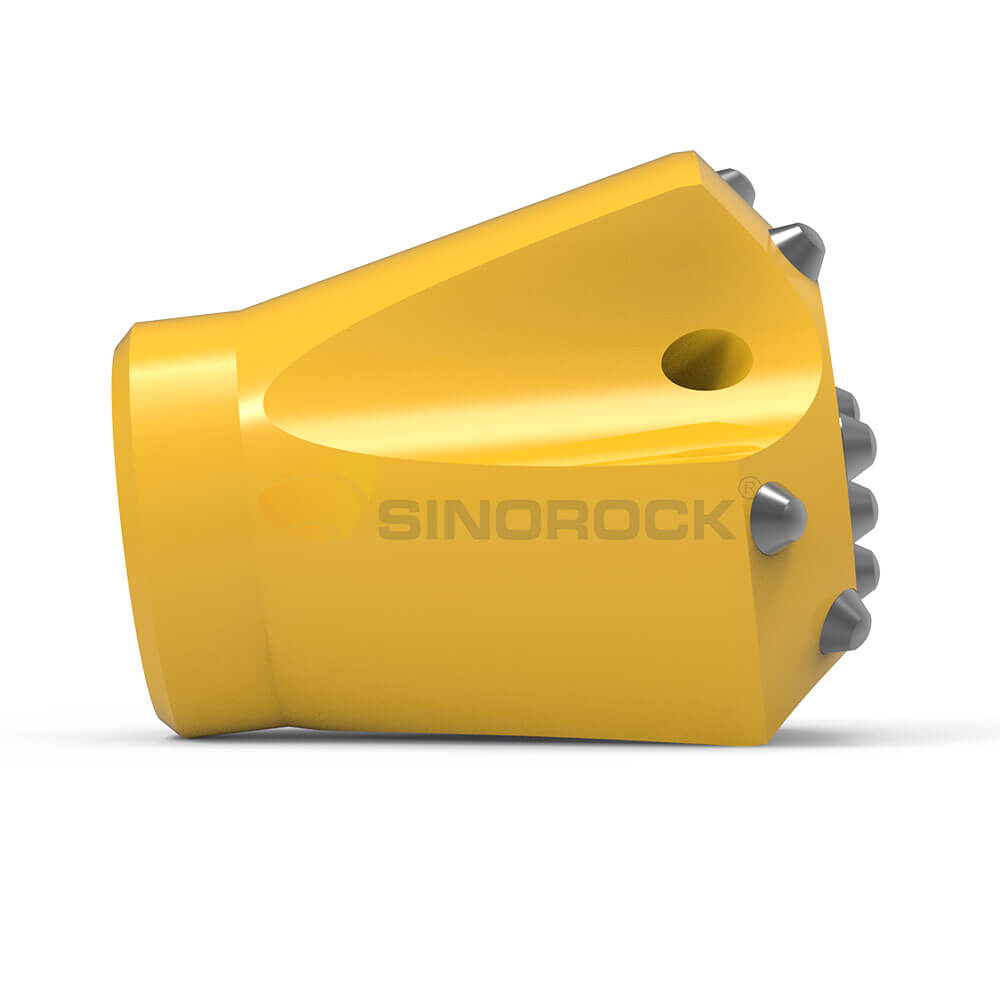Application of self-drilling hollow rod and solid rod in different formations
Time:2022-03-31From:sinorock View:
Hollow rods and solid reinforced rods are two different forms of anchoring, therefore, the installation issue is related to ground conditions and the stability of the drilled hole, rather than space constraints.
In loose or collapsed formations, the self-drilling hollow rod body is the best solution, since this solution solves the problem of casing usage, it can be quickly installed and grouted at one time. In water-bearing gravel layers, casing can easily become stuck, so self-drilling hollow-rod systems are the most practical solution.
Although the variety of drill bits broadens the application range of the rod body, it does not mean that the self-drilling hollow rod body is suitable for all geological conditions. Bit selection ranges from mud bits for soil to spheroidal alloy bits for rock formations, and other types of bits.
In tight rock formations, the use of DTH drilling method is more efficient, so solid threaded steel bars are generally preferred, and the drill bits used for self-drilling hollow rod bodies are disposable bits, so they have lower alloy content and rougher bits compared to standard bits, cost-effective. Suitable for rock holes up to 5m deep, not suitable for deeper drilling.


Under wet clay strata, solid threaded steel bars are preferred due to problems with self-drilling hollow rods. Under the wet clay layer, the drill cuttings are easy to get stuck in the hole, causing the hole to be blocked and the flushing to be blocked. Usually choose to drill with auger and then follow the scheme of solid rod body.
Self-drilling hollow rods can be used in wet clay soil if the drill has a nozzle on it. The system uses high pressure flushing, including a higher water-cement ratio (w/c 0.9 or similar) flushing fluid to create a jet at the bit that liquefies the clay and flushes it out of the borehole. In addition, the borehole diameter is significantly enlarged. The system requires a special high-pressure grouting pump that can handle larger volumes of flushing fluid (containing suspended clay particles) at the borehole.
Although self-drilling hollow bolts have obvious advantages in loose or collapsed formations, self-drilling hollow bolts cannot provide an effective drilling solution in wet clay or tight rock formations, where solid bolts are more effective. to be valid.
latest news
-

- What Are the Applications of SDA Bolts in Hydropower Stations?
- Time:2025-08-21From:This Site
- Learn how self-drilling anchor bolts enhance slope stability, tunnel support, and dam reinforcement in complex geological conditions at hydropower stations. Optimize hydropower projects with efficient, cost-effective, and eco-friendly solutions.
- View details
-

- Slope Stabilization with SDA Bolts: Benefits & Applications
- Time:2025-08-19From:This Site
- Discover how self-drilling anchor bolts (SDA bolts) provide superior slope stabilization for highways, railways, and tunnels. Learn their key benefits, installation process, and real-world applications in loose or collapsible soils.
- View details
-

- How Self-Drilling Rock Bolts Enhance Tunnel Support in Fractured Rock?
- Time:2025-08-15From:This Site
- Discover how self-drilling rock bolts enhance tunnel support in fractured rock. Learn their benefits, installation steps, and real-world applications for safe, efficient tunneling.
- View details
-

- Sinorock 2025 Quality Month | Strengthening Quality Foundations, Empowering Product Excellence
- Time:2025-08-13From:This Site
- Sinorock’s 2025 Quality Month, themed “Strengthening Quality Foundations, Empowering Product Excellence,” successfully concluded, reinforcing our commitment to superior product quality.
- View details
-

- Sinorock Safety Month 2025 | Everyone Speaks Safety, Everyone Can Respond
- Time:2025-07-03From:This Site
- Sinorock Safety Month 2025, centered on the theme "Everyone Speaks Safety, Everyone Can Respond - Spot Workplace Hazards," has wrapped up successfully!
- View details
-

- Quality Control: the Vital Factor of A SDA Bolt Factory
- Time:2025-01-09From:This Site
- Sinorock’s comprehensive quality control system, from supplier management to outgoing inspections, ensuring the highest standards for self-drilling anchor bolts in construction.
- View details
-

- Sinorock Invites You to Explore Proven Self-Drilling Anchor Bolt Solutions at bauma 2025
- Time:2025-03-07From:This Site
- From April 7–13, 2025, explore Sinorock’s Self-drilling anchor bolt solution at Booth C2.513/4 in Hall C2 of the Messe München Exhibition Center (Munich, Germany).
- View details
-
.jpg)
- SINOROCK to Attend EXPOMINA PERÚ 2024 in Lima, Peru
- Time:2024-08-10From:This Site
- Sinorock to Attend EXPOMINA PERÚ 2024 in Lima, Peru
- View details
-
.jpg)
- SINOROCK to Participate in MINING AND METALS CENTRAL ASIA 2024
- Time:2024-08-08From:This Site
- SINOROCK to Participate in MINING AND METALS CENTRAL ASIA 2024
- View details
 Download
Download 


